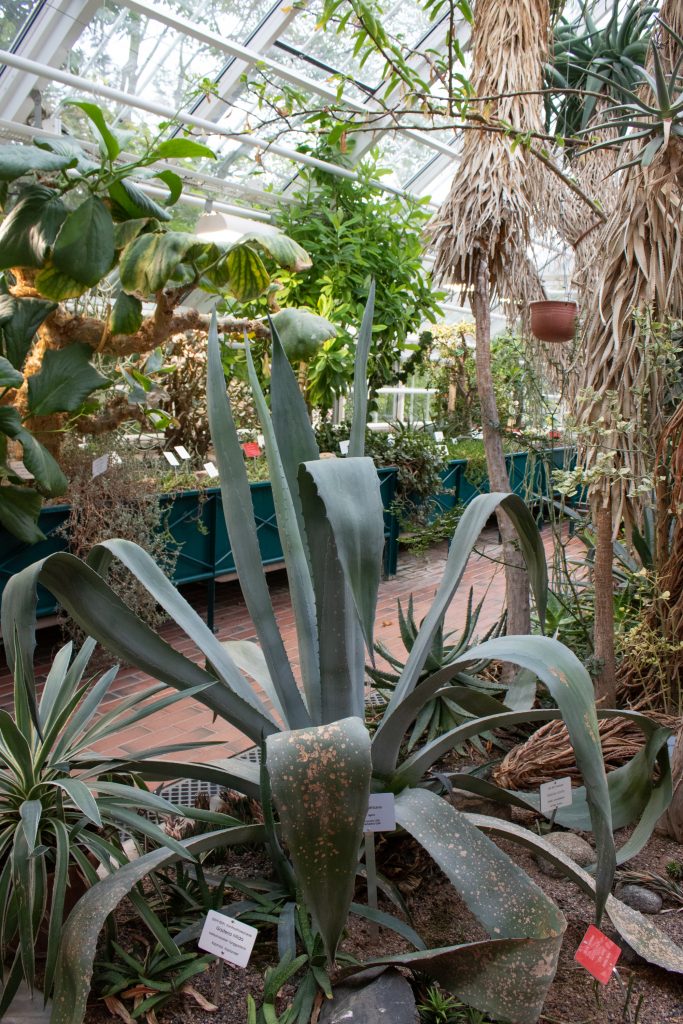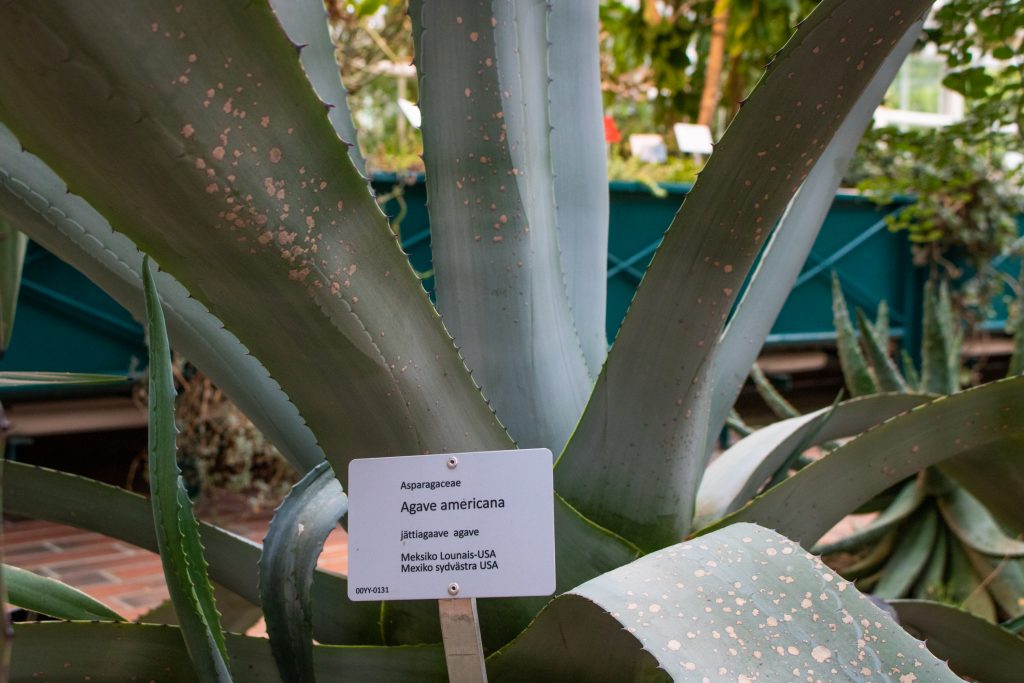This giant succulent hails from Mexico, and can grow for decades until blooming and dying. In the wild, the plant would typically flower at the age of between 10 and 30 years, but in a glasshouse or at home the blossoming may take much longer. After the mother plant dies, the next generation emerges from the root network.
The American agave is a globally popular ornamental plant. Agaves, palms and other exotic plants were used in Finnish manor gardens of the 19th and 20th centuries. In addition to its ornamental value, the American agave can be used for food production in many different ways. Its flower can be used similarly to asparagus (which the plant is related to!), the seeds are ground for flour, and the stem is used to make the alcoholic drink known as mezcal. Tequila, meanwhile, comes from the tequila agave (Agave tequilana). Both the American agave and the sisal plant (also found in this room) are used to make paper and textiles.
The Desert room houses both agaves and aloes. Even though the aloes and agaves have similar leaves, they are not closely related. The agave is native to arid areas of the Americas, while the aloe is an Old World plant. Their similar appearance is due to adaptations to similarly dry conditions. Both the aloe and the agave store moisture in their succulent leaves.

